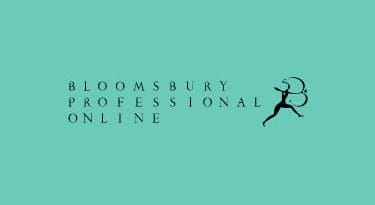At the heart of the VAT simplification challenge lies the concept of path dependency, a theory explored by Professor Rita de la Feria in The UK VAT at 50: The Good, the Bad and the Ugly. Path dependency refers to the idea that decisions made today are heavily influenced by historical choices and structures. In the context of UK VAT, the UK’s early adoption has led to certain administrative and design features becoming deeply embedded, making it challenging to implement reforms.
Multiple rates of VAT
The UK’s four different VAT rates (standard 20% rate, 5% reduced rate, zero rate and exemption) demonstrate historical complexity that remains resistant to change. When VAT was first introduced in Europe, policymakers relied on intuition to exclude certain items from full taxation, aiming for fairness. However, over the past 40 years, the evidence has continued to show these reduced rates are not as fair or as efficient as first thought, and the benefits do not accrue to the consumer, but rather the businesses within the supply chain.
Ruth Corkin, Principal for VAT and Indirect Taxes at Hillier Hopkins, notes: “Consumers don’t benefit from VAT rate reductions because companies rarely pass them on. There are lots of reports now that say that multiple rates of VAT don’t work for social issues.”
Research by de la Feria with Michael Walpole explains that these reduced rates and exemptions, originally intended for fairness, have become entrenched due to a combination of special interests and public cognitive biases: cognitive dissonance, loss aversion and status quo bias.
Corkin, who began her 30-year VAT career as a Customs and Excise officer, agrees.
“If you look at food, for instance, there is no way that those three lines in the law should have exceptions, and exceptions to exceptions, and such a lot of things turning on very niche concepts. The food industry doesn’t want it. The manufacturers and distributors are doing very well out of it, and again, they wouldn’t pass on the savings, so the consumer, who is the person who bears the tax, wouldn’t see it,” she says.
The proposal to make hot food sold by bakeries and supermarkets subject to VAT at 20% was an attempt at broadening the base, but it clashed with established cultural norms and expectations. Special interest groups relied on trusted sources to deliver a fairness-centric narrative to mask their own self-interest. The backlash was encapsulated by The Sun newspaper’s headline “Let them eat cold pasty”, which stoked public anger at a VAT change that most people did not understand.
Resistance to change
Furthermore, businesses that have invested in systems to navigate the complex VAT landscape are often reluctant to support simplification efforts that might render those investments obsolete.
Vineta Bajaj, CFO at Rohlik Group, explains: “A number of challenges have arisen due to the complex VAT system, with evolving legislation making it difficult to enforce widespread adoption of unfamiliar processes. The government faced substantial pushback from business owners who had grown accustomed to the existing procedures and limitations in technology and infrastructure.”
Future simplification efforts
Despite these challenges, there is still hope for VAT simplification. De la Feria and Walpole’s research offers valuable guidance for future efforts.
- Counter-fairness narrative: Simplification advocates should develop a counter-fairness narrative that relies on emotion and intuition, emphasising the lack of self-interest in reform proposals.
- Timing and scale: Big-bang reforms that decrease loss aversion (people might be more sensitive to losses due to zero-rate removals, rather than the overall gains from a lower standard rate) by front-loading benefits, particularly for lower-income households, are more likely to succeed than gradual changes.
- Addressing information asymmetry: Efforts should be made to bridge the information gap between politicians and policymakers and ordinary voters, providing clear, accessible explanations of the benefits of a broader-based VAT system.
- Leveraging technology: Modern technology should be used to reduce administrative burdens and make compliance easier. The Office of Tax Simplification (OTS) also noted in its 2022 review of tax simplification that tax policy changes should make the best use of digital systems and data.
Bajaj agrees with this approach: “Any future attempts at VAT simplification need to prioritise a phased approach, with direct support for businesses transitioning to the new system. Effective communication, tailored guidance and continuous stakeholder engagement can go a long way in ensuring the long-term success of this scheme. I believe aligning your simplification efforts with broader digitalisation strategies has the potential to work wonders for VAT reform across the UK.”
However, as de la Feria's research suggests, any meaningful reform will need to address the entrenched practices that have shaped the UK’s VAT system over the past five decades. This may require a more fundamental rethinking of the VAT structure, rather than piecemeal adjustments. Overcoming the barriers to VAT simplification will require not only technical expertise but also a deep understanding of the psychological and political factors at play. By addressing these complex dynamics, policymakers may finally be able to achieve the long-sought goal of a simpler, more efficient, VAT system.
Corkin believes that with government willpower, better HMRC reporting and clearer guidance, there is a chance that simplification efforts can succeed. “I’d like to think that a new government with a new broom and new approach will look at this. The VAT Act is from 1994 – literally last century. It’s only had two iterations in 1972/73 and 1983. Simplification would result in much more tax take and much more buy-in.”
How to fix VAT
ICAEW explores the challenges and opportunities offered in reimagining VAT. Read about the history of VAT, the lessons that can be learned from outside the UK and the potential of digitalisation.

The Tax Faculty
ICAEW's Tax Faculty is recognised internationally as a leading authority and source of expertise on taxation. The faculty is the voice of tax for ICAEW, responsible for all submissions to the tax authorities. Join the Faculty for expert guidance and support enabling you to provide the best advice on tax to your clients or business.


